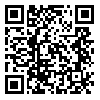BibTeX | RIS | EndNote | Medlars | ProCite | Reference Manager | RefWorks
Send citation to:
URL: http://jdisabilstud.org/article-1-3081-en.html
2- Associate Professor, Psychology Group, Faculty of Education Sciences & Psychology, Tehran University, Tehran, Iran
3- Assistant Professor, Faculty of Psychology and Children with Exceptional Education, Islamic Azad University Science and Research Branch, Tehran, Iran
4- Assistant Professor, Psychology Group, Faculty of Education Sciences & Psychology, Tehran University, Tehran, Iran
Abstract
Background & Objectives: Externalizing disorders are common in children and appear in preschool and school ages. The disorders include Attention Deficit Hyperactivity Disorder (ADHD), Conduct Disorder (CD), and Oppositional Defiant Disorder (ODD), whose symptoms have a negative impact on the interaction between children and parents. One of the effective and well–known treatments to reduce children's behavioral problems is cognitive–behavioral therapy (CBT). This therapy is one of the extensive non–medicinal approaches. It is essential to intervene with children with externalizing disorders as early as possible before their maladaptive behaviors become increasingly stable and destructive. Education should start with mothers because of the parent's role, especially mothers, who interact and communicate most with children. The present study investigated the effectiveness of a package of cognitive–behavioral interventions centered on mothers with children with externalizing problems in improving child–parent interaction.
Methods: This quasi–experimental study employed a pretest–posttest and a two–month follow–up design with a control group. The study subjects were 30 mothers with children with externalizing problems who were chosen by convenience sampling. Then, they were randomly assigned to the experimental and control groups. The research tools were the Parent–Child Relationship Scale (PCRS) (Pianta et al., 1997) and mother–centered cognitive–behavioral intervention (CBT). The program was implemented in two main stages, including the main framework of cognitive behavioral therapy and the combination of this framework with the behavioral characteristics of children and the problems of mothers with children with externalizing behavioral disorders. The experimental group received CBT intervention for twelve 120–minute sessions, but the control group did not receive any intervention. Descriptive statistics (mean, standard deviation, frequency, and percentage) were used to describe the obtained data. For data analysis, analysis of variance with repeated measurements and post hoc Bonferroni test were used. All analyses were done using SPSS version 24 software. The significance level of statistical tests was considered 0.050.
Results: The results showed that the group effect, the time effect, and the interaction effect of time and group on the variables of conflict and dependence and positive relationship were significant (p<0.05). In the experimental group, in the variables of conflict and dependence, the average scores of the posttest and follow–up stages were significantly reduced compared to the average scores of the pretest stage (p<0.001). Also, in the variables of conflict (p=1.000) and dependence (p=0.323), the difference between the scores of the posttest and follow–up in the intervention group was not significantly different, indicating the stability of the treatment effects over time. In the experimental group, in the positive relationship variable, the average scores of the posttest and follow–up stages increased significantly compared to the average scores of the pretest stage (p<0.001). Also, the difference between the scores of the posttest and the scores of the follow–up in the intervention group was not significant, indicating the stability of the treatment effects over time (p=0.319). However, in the control group, in the mentioned variables, the difference between the scores of the pretest stage and the scores of the posttest and follow–up stages was not significant (p>0.05)
Conclusion: According to the research findings, the mother–based cognitive behavior intervention (CBT) effectively improves the parent–child relationship. This therapy, as an effective and beneficial intervention, is suggested for families with children with externalizing disorders.
| Rights and permissions | |
 |
This work is licensed under a Creative Commons Attribution-NonCommercial 4.0 International License. |



